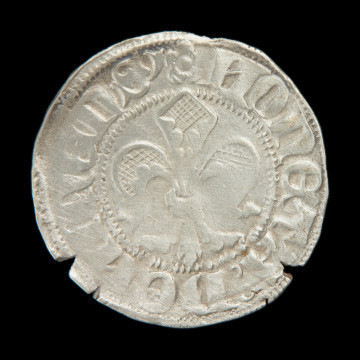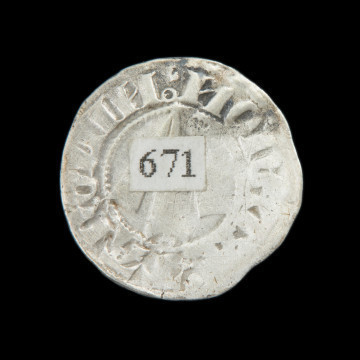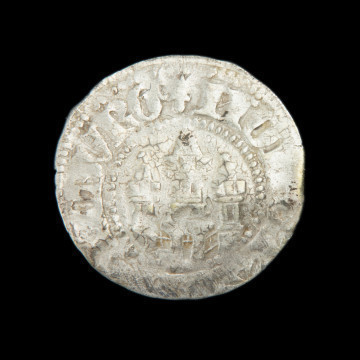
Thcik pfennig
XV wiek
National Museum in Szczecin
Part of the collection: Szczecin treasure from Podzamcze
New monetary units - wittens, quarterings and the so-called thick pfennigs appeared in the Pomeranian minting industry in the 14th and 15th centuries. They were examples of municipal minting - obvious evidence of the growing importance of cities in the late Middle Ages. Pomeranian centres received or bought the right to mint their coins from local dukes from the Griffin dynasty, who defined the type of issue and the image of the coin stamp, which had to include the griffin sign - the symbol of the state and dynasty. A thick pfennig was part of the so-called Podzamcze treasure, discovered during archaeological works. In the bronze cauldron, there were 358 coins and over 300 silver gilded costume ornaments. Among the coins, whose time of origin was determined as the 14th - 15th centuries, there were thick pfennigs and wittens, characteristic of the West Pomeranian mint. Presented thick pfennig was minted in Greifswald, which is evidenced by an embossed inscription MONETA GRIPEWO (Greifswald coin) and an image of a griffin with its head turned to the left and shown in walking position, which can still be found on the coat of arms of the city. In 1395, due to an agreement with Stralsund and Anklam (Tąglim), Greifswald introduced this monetary unit, which corresponded to the value of 2 wittens or 12 arrow denars. The new coin was quickly adopted by the cities of the Hanseatic League and other centres of West Pomerania and became a popular means of payment.
Małgorzata Peszko
Dimensions
cały obiekt: diameter: 2,3 cm
Object type
coin
Creation time / dating
Creation / finding place
Identification number
Location / status

XV wiek
National Museum in Szczecin

XV wiek
National Museum in Szczecin

1370
National Museum in Szczecin
DISCOVER this TOPIC
National Museum in Lublin
DISCOVER this PATH
Educational path